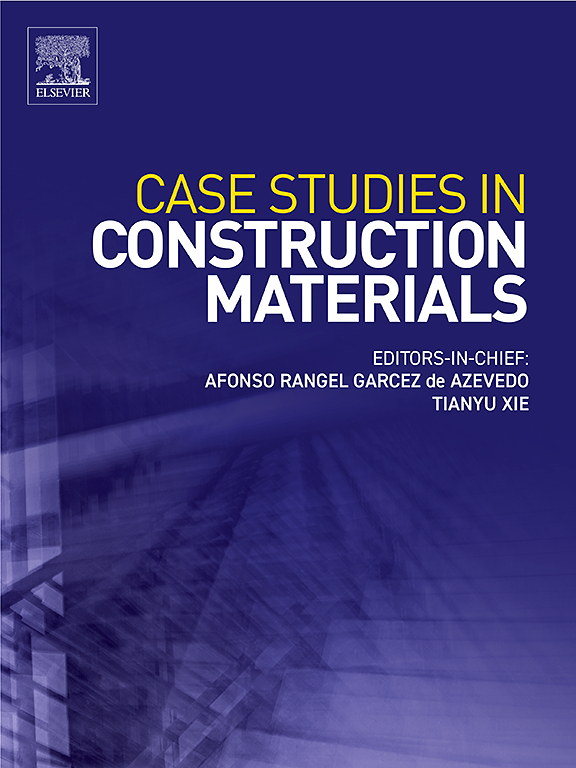Quantitative infrared detection methods for debonding in concrete-filled steel tubes during the hydration heat phase
IF 6.6
2区 工程技术
Q1 CONSTRUCTION & BUILDING TECHNOLOGY
引用次数: 0
Abstract
Conducting rapid quantitative debonding detection after the completion of Concrete-filled steel tube (CFST) pouring is crucial for the timely identification and repair of potential structural issues. Currently, there is a lack of an infrared detection method that can perform quantitative detection specifically during the construction phase of CFST. This study proposes a Discreteness-Based Image Preprocessing (DBIP) method, combined with Otsu’s and K-means image segmentation methods, to explore its effectiveness in detecting debonding in CFST during the hydration heat phase. A full-scale CFST model was used to simulate debonding areas of different sizes, and infrared thermal imaging data were collected. The results show that the DBIP method significantly improved detection accuracy, and the DBIP+K-means combination can effectively quantify debonding areas with a minimum side length of 126 mm (10 % debonding rate). The study also reveals that the correlation between the F1-score and thermal contrast is linear when the thermal contrast is between 0°C and 0.18°C. When the thermal contrast exceeds 0.18°C, the F1-score stabilizes at approximately 0.8. The finding clarifies the detection accuracy range under different thermal contrast conditions and suggests potential optimization directions for the quantification of CFST debonding in practical application via infrared thermography.
钢管混凝土水化热阶段脱胶的定量红外检测方法
在钢管混凝土浇筑完成后进行快速定量的脱粘检测,对于及时发现和修复潜在的结构问题至关重要。目前,还缺乏一种能够在CFST施工阶段专门进行定量检测的红外检测方法。本研究提出了一种基于离散的图像预处理(DBIP)方法,结合Otsu和K-means图像分割方法,探索其在水化热阶段检测CFST脱粘的有效性。采用全尺寸CFST模型模拟不同尺寸的脱粘区域,并采集红外热成像数据。结果表明,DBIP方法显著提高了检测精度,DBIP+K-means组合可以有效量化最小边长为126 mm(脱粘率为10 %)的脱粘区域。研究还发现,当热对比在0℃~ 0.18℃之间时,f1分数与热对比呈线性相关。当热对比超过0.18°C时,f1分数稳定在0.8左右。这一发现明确了不同热对比条件下的检测精度范围,为实际应用中红外热像仪定量CFST脱粘提供了可能的优化方向。
本文章由计算机程序翻译,如有差异,请以英文原文为准。
求助全文
约1分钟内获得全文
求助全文
来源期刊

Case Studies in Construction Materials
Multiple-
CiteScore
7.60
自引率
19.40%
发文量
842
审稿时长
63 days
期刊介绍:
Case Studies in Construction Materials provides a forum for the rapid publication of short, structured Case Studies on construction materials. In addition, the journal also publishes related Short Communications, Full length research article and Comprehensive review papers (by invitation).
The journal will provide an essential compendium of case studies for practicing engineers, designers, researchers and other practitioners who are interested in all aspects construction materials. The journal will publish new and novel case studies, but will also provide a forum for the publication of high quality descriptions of classic construction material problems and solutions.
 求助内容:
求助内容: 应助结果提醒方式:
应助结果提醒方式:


